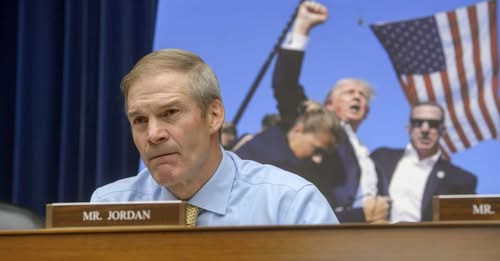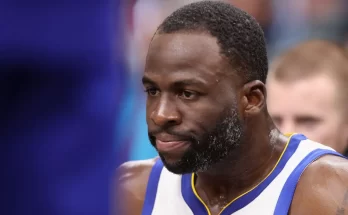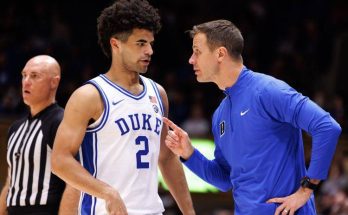**Jim Jordan Questioned Under Oath in Wake of Ohio State Sexual Abuse Documentary**
In a significant development linked to the ongoing scrutiny of sexual abuse at Ohio State University, Republican U.S. Representative Jim Jordan has been questioned under oath, according to a recent court filing. This development comes amid renewed attention following the release of a documentary exposing decades-old allegations of sexual abuse by a former Ohio State team doctor. The allegations have cast a long shadow over the university’s athletics program and raised questions about institutional accountability, leadership, and the protection of student-athletes.
The sexual abuse scandal at Ohio State University revolves around Dr. Richard Strauss, who served as the university’s team physician from the late 1970s until 1998. Over the years, numerous former athletes have come forward with accusations that Strauss sexually abused them during medical examinations. These disturbing claims paint a picture of a long-term pattern of abuse that reportedly went unchecked for nearly two decades, affecting hundreds of athletes and prompting lawsuits and investigations.
The documentary that recently surfaced has reignited public interest and legal inquiries into how such abuse could have continued for so long without effective intervention. It includes testimonies from survivors who recount the trauma they endured, as well as allegations that university officials, including those in leadership roles, failed to act decisively or even actively covered up the abuse.
Amid these revelations, Jim Jordan’s name has come under scrutiny. Jordan, who is currently serving as a Republican representative in the U.S. Congress, previously held a position as an assistant wrestling coach at Ohio State University during the period when Strauss’s abuse allegedly occurred. Several survivors have publicly claimed that Jordan was aware of the abuse at the time but did not take appropriate steps to stop it. Jordan has consistently denied these allegations, asserting that he never witnessed or was informed of any abuse during his tenure at Ohio State.
The recent court filing, which confirms that Jordan was questioned under oath, adds a new layer of complexity to this ongoing saga. While details of Jordan’s testimony have not been fully disclosed, the development indicates that investigators are intensifying their efforts to uncover the full extent of what university officials knew and when. It also raises the stakes politically, as Jordan is a high-profile lawmaker known for his conservative stances and vocal support of former President Donald Trump.
The backdrop to this situation is a growing nationwide reckoning with sexual abuse in sports, particularly involving youth and collegiate athletics. The Ohio State case is one of several high-profile scandals, including the Larry Nassar case at Michigan State University, which exposed widespread abuse by a team doctor and institutional failures to protect athletes. These cases highlight systemic issues in how institutions handle allegations of abuse, often prioritizing reputation and athletics success over the safety of students.
Ohio State University itself has faced multiple lawsuits from former athletes, some seeking millions of dollars in damages. The university has issued public apologies and committed to improving policies around athlete safety and reporting mechanisms. However, critics argue that the institution’s responses have been insufficient and slow, and that survivors have not yet received full justice or accountability from those responsible.
The documentary, which has attracted considerable media attention, features interviews with survivors, former staff, and legal experts who detail how Strauss was able to abuse his position and evade detection for so long. It also examines the university’s administrative response—or lack thereof—and the culture within collegiate sports that may discourage athletes from speaking out against powerful figures.
Jim Jordan’s involvement in this controversy is particularly noteworthy given his political prominence. Elected to Congress in 2006, Jordan has built a reputation as a staunch conservative and influential figure within the Republican Party. His past as an Ohio State wrestling coach has been a key part of his personal narrative, emphasizing his connection to grassroots athletics and commitment to youth sports.
However, the allegations that he was aware of abuse and failed to act have cast a pall over his record. Jordan has repeatedly denied any wrongdoing, characterizing the accusations as politically motivated attempts to damage his career. He has emphasized that he would have reported any abuse if he had known about it and criticized media coverage as unfair.
Legal experts suggest that Jordan’s testimony could be pivotal in the ongoing litigation and investigations. If it emerges that he or other university officials had credible knowledge of Strauss’s misconduct and failed to intervene, it could strengthen claims of institutional negligence and complicity. It could also have broader implications for accountability in collegiate athletics, potentially prompting reforms in how universities monitor and address abuse allegations.
This case also underscores the challenges survivors face in seeking justice after abuse occurs. Many of the alleged victims from Ohio State came forward decades after the abuse, often struggling with trauma and fear of retaliation. The passage of time complicates evidence gathering and legal proceedings but also demonstrates the lasting impact of abuse on individuals’ lives.
The involvement of a sitting member of Congress in this investigation adds a political dimension to what is already a highly charged legal and moral issue. It raises questions about how lawmakers with ties to institutions under scrutiny navigate conflicts of interest and public trust. Jordan’s position on congressional committees and his influence in national politics mean that the fallout from this case could extend beyond Ohio and the university.
Meanwhile, Ohio State continues to grapple with the fallout from the scandal. University officials have pledged to cooperate fully with investigations and to implement stronger safeguards to prevent future abuse. They have also worked to support survivors through counseling and compensation programs, though some argue that these efforts do not go far enough.
The wider sports community is also watching closely. Athletic programs nationwide face increased pressure to ensure the safety of athletes and to foster environments where abuse is neither tolerated nor hidden. The Ohio State case is likely to serve as a cautionary tale, emphasizing the need for vigilance, transparency, and accountability at all levels of sport.
In summary, the questioning of Representative Jim Jordan under oath represents a critical moment in the long-running investigation into sexual abuse at Ohio State University. It highlights the ongoing quest for truth and justice by survivors and the challenges institutions face in addressing past misconduct. As legal and political developments unfold, the case remains a stark reminder of the importance of protecting athletes and holding those responsible accountable, regardless of their status or position.
The unfolding story at Ohio State is part of a broader national conversation about sexual abuse in sports, institutional responsibility, and the rights of survivors. It compels universities, athletic departments, lawmakers, and society at large to confront uncomfortable truths and work toward meaningful change. For the victims who have come forward, the hope is that renewed scrutiny and legal action will bring acknowledgment, healing, and systemic reform to prevent future abuses.



